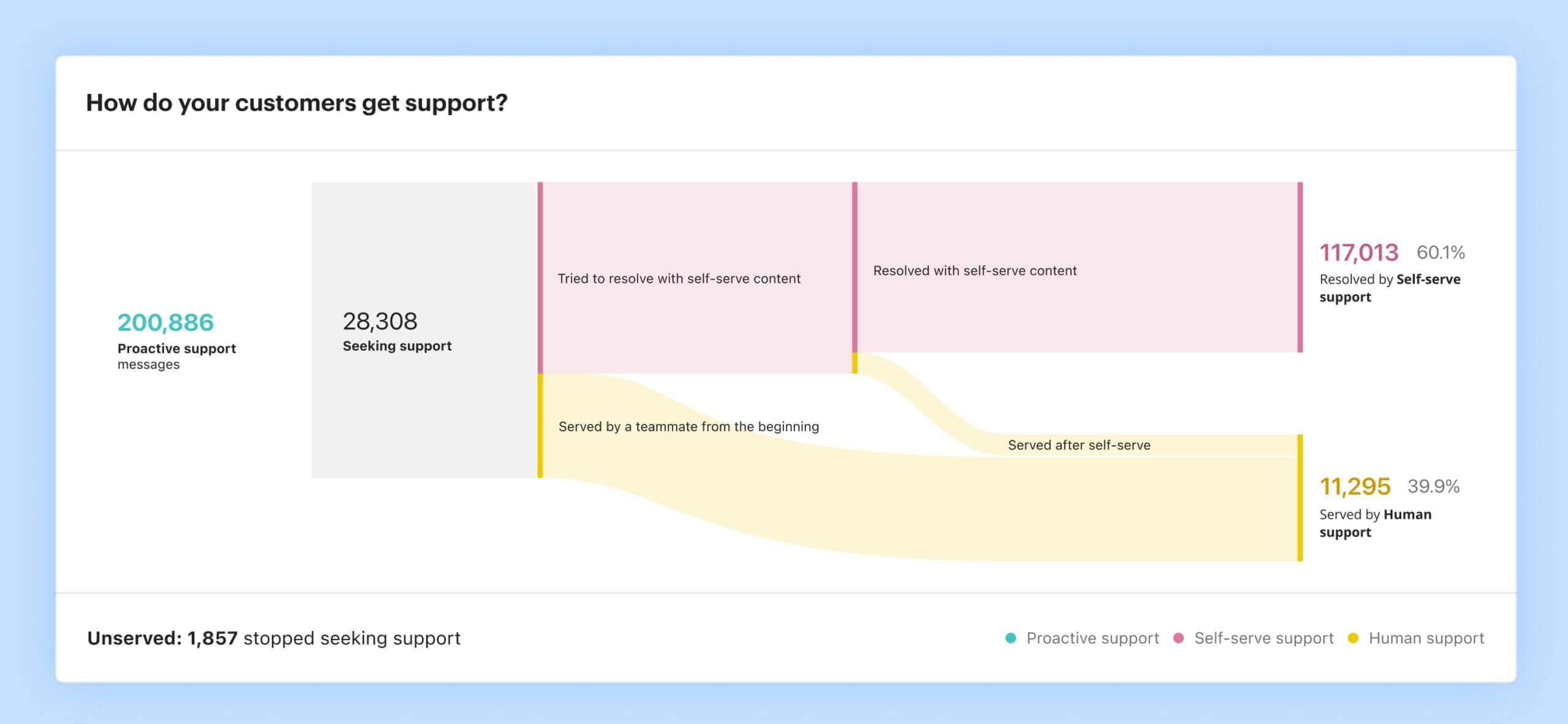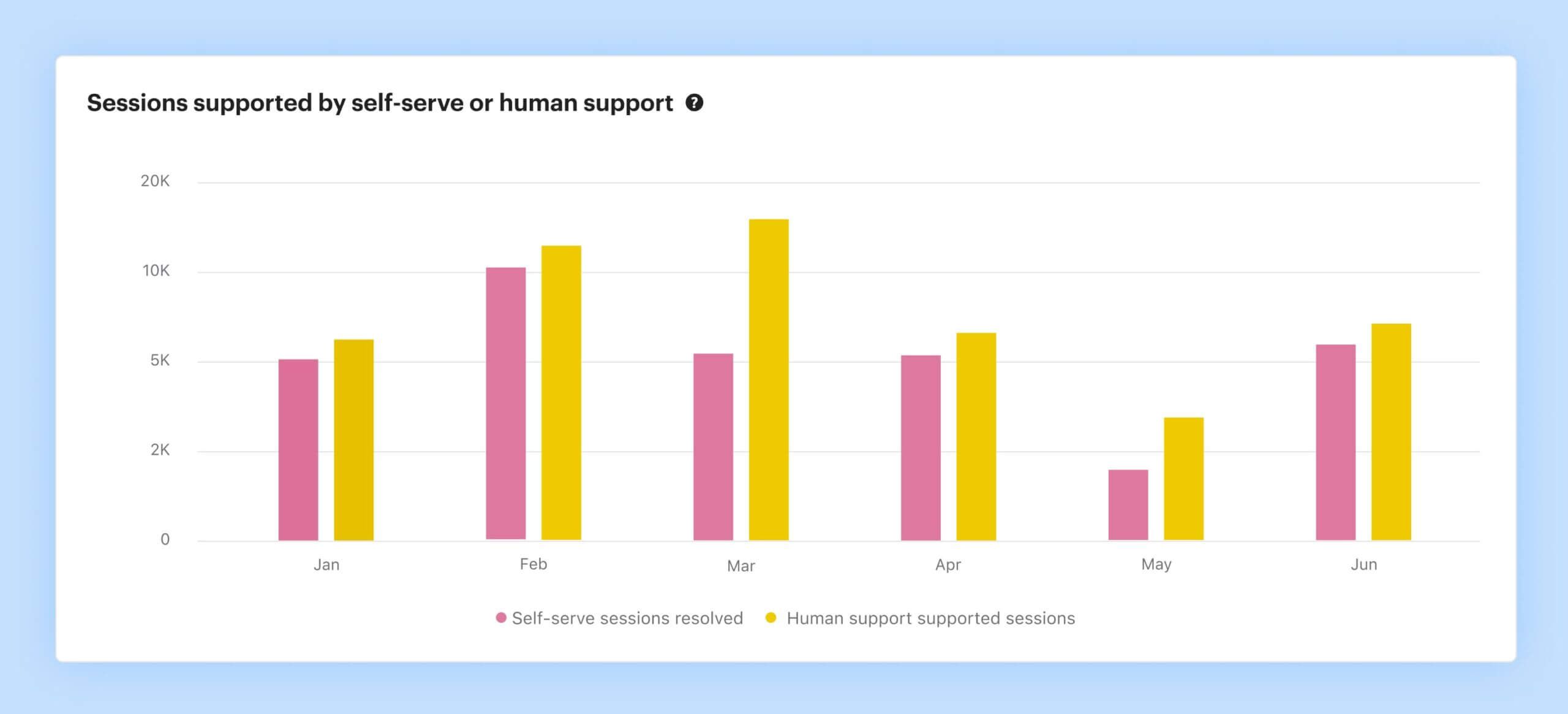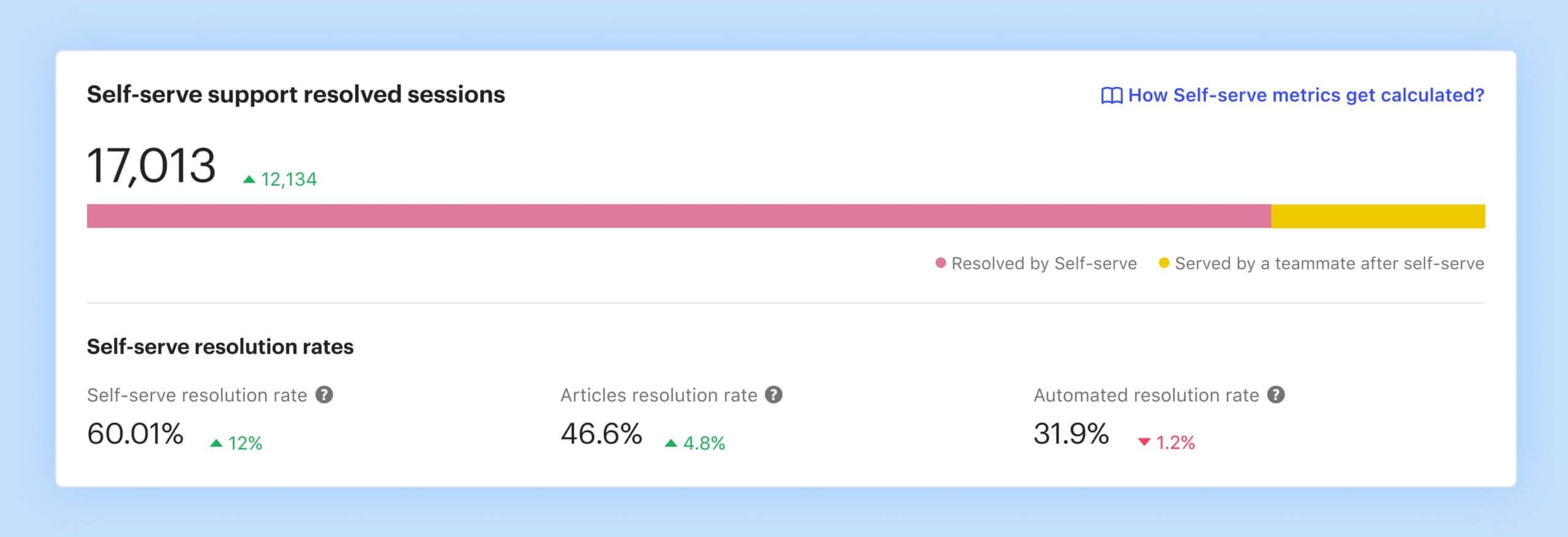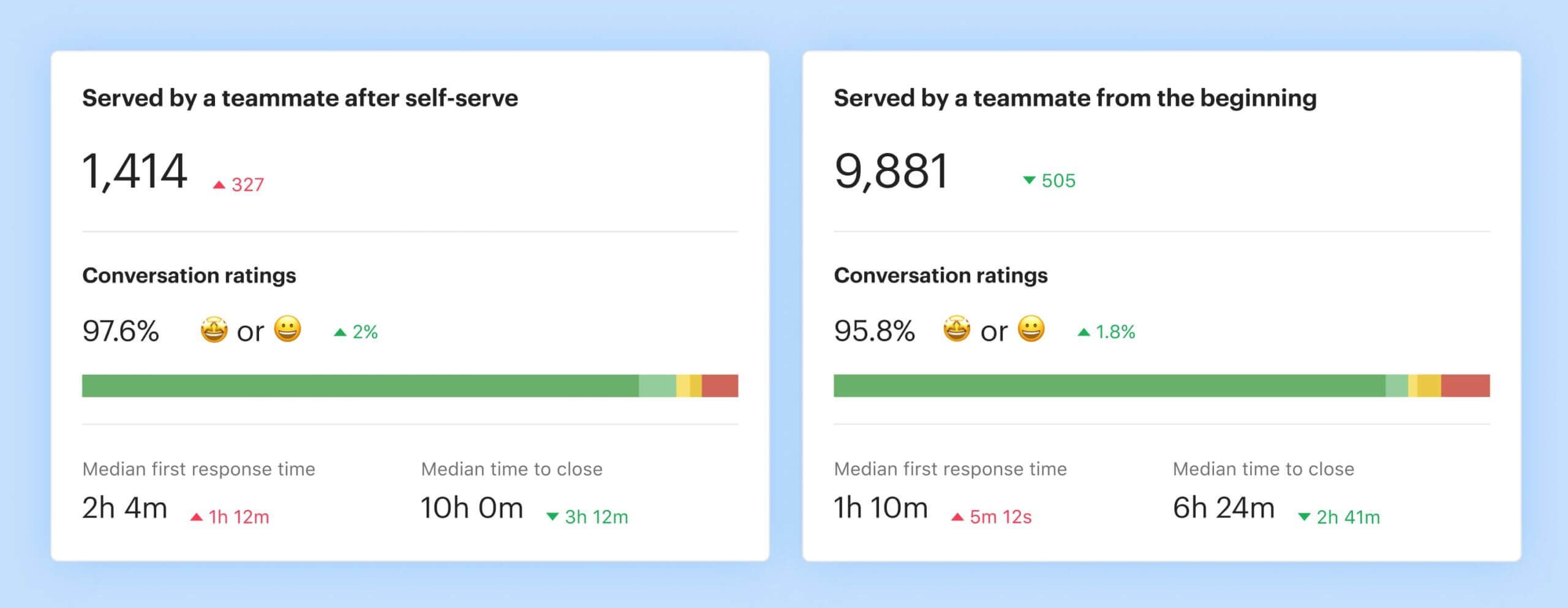
Sharpen your support strategy with the new Conversational Support Funnel report
With increasing conversation volumes and mounting customer expectations, support teams need a way to ruthlessly optimize their support strategy for maximum efficiency and CSAT.
Last year we announced the Conversational Support Funnel – a powerful framework to help your support team to get ahead of known problems with proactive support, automatically answer simple, repetitive queries with self-serve support, and resolve complex issues with a human touch.
Many support teams implemented the funnel and saw game-changing results, including reduced inbound conversation volume, faster resolution rates, and enhanced CSAT. But there was one problem – there was no quick way to gain a complete, visual view of how the funnel was working for your business.
“Modern conversational support tools can supercharge your team’s capabilities and help you deliver personal, efficient support at any scale”
As a result, some support teams defaulted to over-relying on their human support team because human productivity seemed easier to measure than newer – but very effective – tools like bots, articles, and proactive messages. When done right, these modern conversational support tools can supercharge your team’s capabilities and help you deliver personal, efficient support at any scale.
That’s why we’re so excited to launch our new visual Conversational Support Funnel report. Now, at a glance, you can see how proactive, self-serve, and human support are performing for your business so you can understand precisely where to invest your resources for maximum impact. Let’s dive in.
Get a holistic view of how your support is performing at every stage of the funnel
Support leaders are on the hook for making business-critical decisions daily, weekly, monthly, and yearly around how to maintain high customer satisfaction and fast response rates.
Historically, making these kinds of high-impact, strategic decisions likely hinged on partnering with other teams such as Product Analytics to extract the right data. Or maybe it involved jumping between disconnected tools and manually entering data into spreadsheets to cobble together “meaningful” insights.
Now with the new Conversational Support Funnel report, support teams can instantly gain an overview of how the funnel is performing to quickly see which support methods are resolving the most queries and delivering the biggest return on investment (ROI). For example, you’ll be able to easily answer critical questions like:
- What percentage of queries are being resolved by self-serve support instead of your team?
- How many proactive support messages are you sending versus how many people are seeking support?
- How many queries are your team resolving from the beginning versus how many are they resolving after an attempted self-serve interaction?

With the beautiful sankey diagram, you’ll be better able to visualize the ROI of your self-serve and proactive support tools and estimate how much work – and time – those tools are saving your team.
You can also share the diagram with your executive team and cross-functional partners to help them better understand the value of investing more in self-serve and proactive support capabilities. There’s huge value to be gained from these modern support tools: our recent Forrester study, Drive Conversational Experiences For a Future-Ready Customer Support Strategy, revealed that the majority of support decision-makers surveyed believed that conversational support leads to better customer retention (60%), increased business efficiency (58%), and increased ROI (54%) – to name just a few benefits.
Gain signals for where to invest your resources for maximum impact
At the start of each quarter, one of the most difficult decisions support managers need to make is where to invest their resources. When your team is tasked with supporting more customers faster and more personally than ever before, it can be tempting to over-rely on your trusted support team.
After all, you know exactly how to measure their performance and highlight their impact to your executive team. But throwing more humans at an ever-expanding problem doesn’t work at internet scale. It results in an over-bloated, expensive team or, worse still, team burnout and dissatisfaction.
So how do you lighten the conversation load on your team while simultaneously satisfying your customers at scale? You need to invest in modern support methods like self-serve and proactive support. Of course, knowing exactly where to invest your resources starts with having the right data at your fingertips.
Our new report shows a visual breakdown of how many queries are getting resolved via self-serve support versus your human support team on a monthly basis in an easy to scan visual chart.

You can also dig a little deeper and see what specific self-serve support tools – articles or bots? – are performing best for your team. The self-serve section of the report reveals:
- What percentage of queries are resolved via articles (the “Articles resolution rate” figure measures the number of users who viewed an article and then subsequently didn’t start a conversation divided by the number of article views).
- What percentage of queries are resolved via automation (the “Automated resolution rate” figure measures the number of conversations closed by Resolution Bot divided by the number of “seeking support” sessions where Resolution Bot delivered an answer).
Armed with this data, you’ll be able to more clearly see where to invest your resources and what areas may need tweaking. For example, if you see Resolution Bot is not resolving as many queries as your articles, you may want to invest more time into training the bot to save your team even more time. This will free up your support team to do what they do best – answering complex, high-touch, and emotionally charged queries with their signature human touch.

On the proactive support side, you can see how many outbound messages get delivered and how many get opened within a specified time period. If you see a strong correlation between the number of proactive messages sent and a reduction in how many people are seeking support you may want to lean more into proactive messaging.

All of this data is great not just for optimizing your support strategy; it also provides additional evidence for how effective these modern conversational support tools are when you need to get buy-in from stakeholders for increasing investment in these areas.
Measure your team’s progress and optimize your strategy
With the new report, you can see how your current performance compares to the past so you can spot whether key metrics are trending in the right direction or if a specific part of the funnel needs attention.
One key area you’ll want to monitor closely, for example, is the human support section of the report. With self-serve and proactive support resolving most simple, frequent queries you should see all sorts of benefits for your support team, including:
- A significant reduction in the volume of inbound queries reaching your team.
- A reduction in your median response time and median time to close.
- Boosted conversation ratings. After all, modern customers value the instant resolutions and quick, contextualized routing personalized bots can provide.
If you see a figure trending in the wrong direction, you can tweak the funnel and optimize your strategy to get it working optimally for your business. For example, if you see the number of queries your team is resolving increase over time, it may be a signal you need to invest more in the proactive and self-serve layers of the funnel.

Get funnel vision
Want to put the funnel to work for your business so you can deliver world-class support at internet scale? Our Conversational Support Funnel Starter Kit guide helps you combine human, self-serve, and proactive support to get ahead of known problems, automatically answer repetitive queries, and quickly resolve complex issues.
Then, once the funnel is set up, you can measure your progress and see how it’s impacting your business with the new Conversational Support Funnel report. Happier customers and a more efficient support team await!






